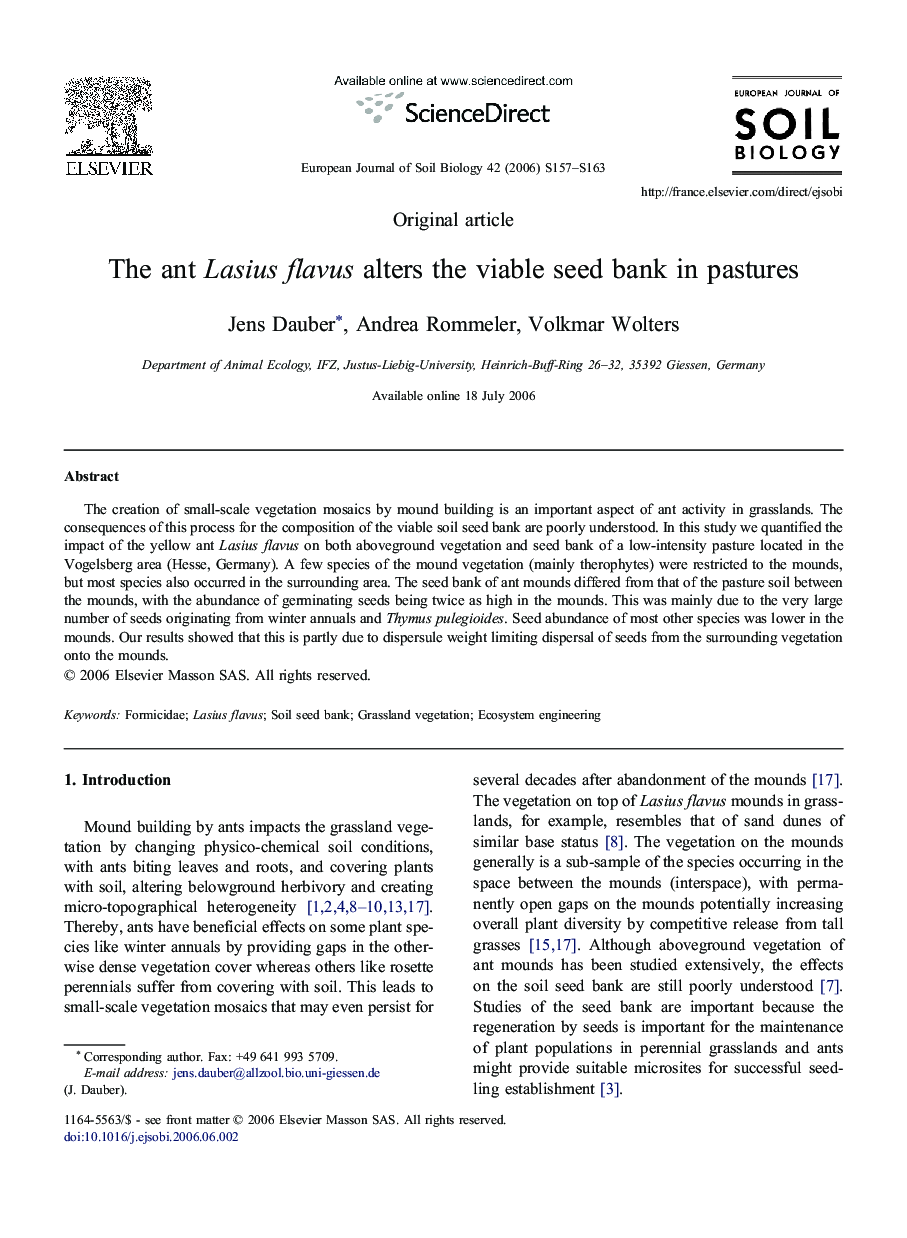| Article ID | Journal | Published Year | Pages | File Type |
|---|---|---|---|---|
| 4392607 | European Journal of Soil Biology | 2006 | 7 Pages |
The creation of small-scale vegetation mosaics by mound building is an important aspect of ant activity in grasslands. The consequences of this process for the composition of the viable soil seed bank are poorly understood. In this study we quantified the impact of the yellow ant Lasius flavus on both aboveground vegetation and seed bank of a low-intensity pasture located in the Vogelsberg area (Hesse, Germany). A few species of the mound vegetation (mainly therophytes) were restricted to the mounds, but most species also occurred in the surrounding area. The seed bank of ant mounds differed from that of the pasture soil between the mounds, with the abundance of germinating seeds being twice as high in the mounds. This was mainly due to the very large number of seeds originating from winter annuals and Thymus pulegioides. Seed abundance of most other species was lower in the mounds. Our results showed that this is partly due to dispersule weight limiting dispersal of seeds from the surrounding vegetation onto the mounds.
